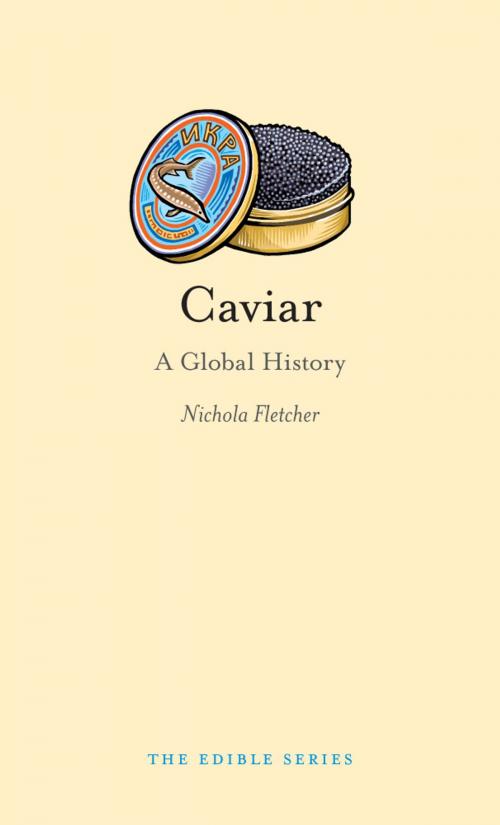| Author: | Nichola Fletcher | ISBN: | 9781861897312 |
| Publisher: | Reaktion Books | Publication: | May 15, 2010 |
| Imprint: | Reaktion Books | Language: | English |
| Author: | Nichola Fletcher |
| ISBN: | 9781861897312 |
| Publisher: | Reaktion Books |
| Publication: | May 15, 2010 |
| Imprint: | Reaktion Books |
| Language: | English |
Served up with a mother of pearl spoon and alongside a crystal flute of champagne, caviar is the ultimate culinary symbol of wealth, luxury, and decadence. But how did tiny fish eggs—which many might regard as an unwanted, throwaway food—become such an international delicacy? In Caviar: A Global History, renowned food writer Nichola Fletcher answers this curious question, examining the rise of caviar as an indulgence and its effect on the lives of the people who seek and sell it today.
Fletcher takes the reader on a tour of the main areas of caviar production—Russia, Iran, Europe, and America—and investigates how the industry has contributed to the decline of the sturgeon population, the fish most associated with caviar. As Fletcher details, many efforts are underway to create sustainable sturgeon farming, which would make it possible to enjoy caviar with a clear, environmental conscience.
Featuring vibrant illustrations and many fascinating anecdotes, Caviar also offers advice on purchasing and serving caviar. This is the perfect food book for everyone in need of a little opulence and glamour.
Served up with a mother of pearl spoon and alongside a crystal flute of champagne, caviar is the ultimate culinary symbol of wealth, luxury, and decadence. But how did tiny fish eggs—which many might regard as an unwanted, throwaway food—become such an international delicacy? In Caviar: A Global History, renowned food writer Nichola Fletcher answers this curious question, examining the rise of caviar as an indulgence and its effect on the lives of the people who seek and sell it today.
Fletcher takes the reader on a tour of the main areas of caviar production—Russia, Iran, Europe, and America—and investigates how the industry has contributed to the decline of the sturgeon population, the fish most associated with caviar. As Fletcher details, many efforts are underway to create sustainable sturgeon farming, which would make it possible to enjoy caviar with a clear, environmental conscience.
Featuring vibrant illustrations and many fascinating anecdotes, Caviar also offers advice on purchasing and serving caviar. This is the perfect food book for everyone in need of a little opulence and glamour.















